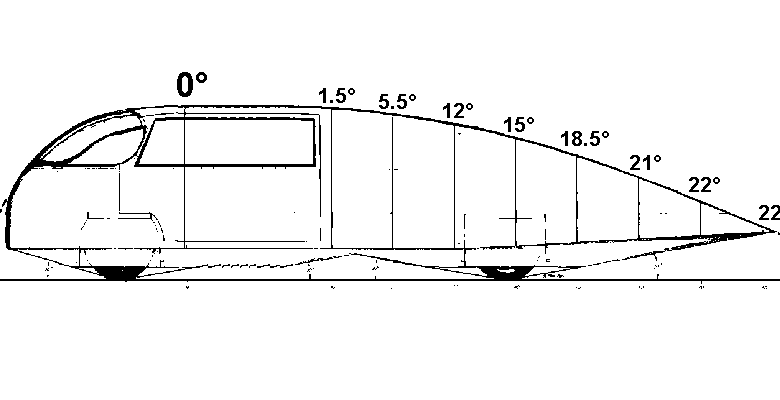Quote:
Originally Posted by cfg83

aerohead -
Would these two elevations be equally aerodynamic? :


CarloSW2 |
Frank Lee and Skyking covered the answer as I would have.
You're basically just adding a constant-velocity section in between the acceleration and deceleration sections.
You'll see this done on commercial jetliner fuselage and submarine hulls.McDonnel Douglas has kept stretching the original DC-9 to end up with today's MD-80.
The antithesis would be the Granville Brother's Gee Bee R-1 racer which is one of the shortest but aerodynamically correct forms when viewed in plan.Jimmy Doolittle had to fly this plane bare-footed,as it was very sensitive to control surface corrections and tended to 'swap ends.'
Mair stuck a section like this into his boat-tailed wind tunnel research model.It is nearly identical to a Gavre artillery projectile which you'd see fired from a howitzer at the Aberdeen Proving Grounds and it has an identical drag coefficient of Cd 0.20,before the boat-tailing begins.
PS I should mention,that by extending the body,the SAE break-over angles would no longer be good and unless you had active suspension to raise the car around town,you'd likely suffer a ground strike at the summit of some driveway ramps.Hate it when that happens!